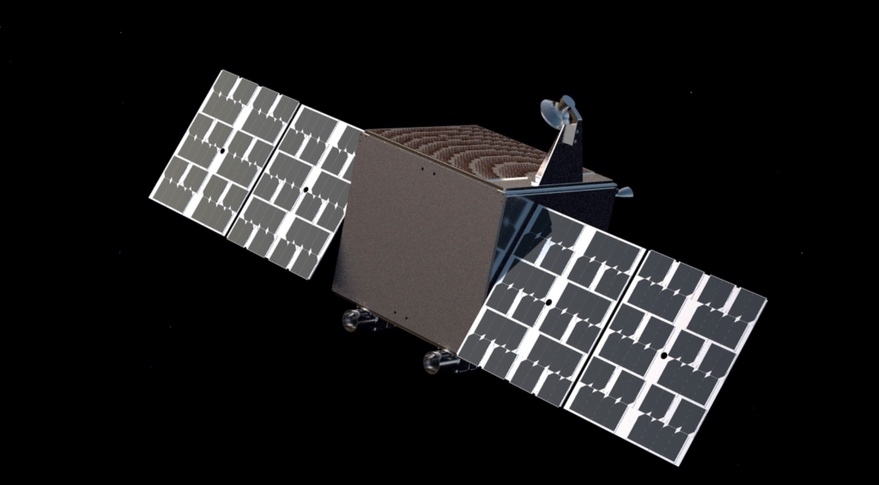2.02.2023
Asteroid mining startup AstroForge to launch first missions this year

AstroForge's second mission, Brokkr-2, is set to launch in October to fly by an undisclosed near Earth asteroid that could host platinum-group metals. Credit: OrbAstro
WASHINGTON — A startup with plans to mine asteroids for metals says it will launch its first two missions this year, including one that will fly by a near Earth asteroid.
AstroForge announced Jan. 24 that it will launch a cubesat into low Earth orbit in April to test its refinery technologies. That will be followed in October by a larger spacecraft that will go by a near Earth asteroid, collecting data about its composition, including the presence of platinum-group metals, or PGMs.
The 6U cubesat, called Brokkr-1, was built by U.K. company OrbAstro and is scheduled to launch on SpaceX’s Transporter-7 rideshare mission. Matt Gialich, co-founder and chief executive of AstroForge, said in an interview that the spacecraft “is essentially ready to be put on the rocket.”
Brokkr-1 will test technology the company has developed to extract metals from asteroid materials. The payload, which takes up two-thirds of the volume of the cubesat, will attempt to vaporize “asteroid-like” material carried inside and sort out metals from other constituents.
The second mission, Brokkr-2, is also build by OrbAstro, using a larger 100-kilogram bus. It will launch as a secondary payload on IM-2, the second lunar lander mission by Intuitive Machines, on a Falcon 9. AstroForge said the launch is scheduled for October although Intuitive Machines said only that it is planned for the second half of the year.
Brokkr-2 will fly by a small near Earth asteroid, collecting data that AstroForge says will allow it to determine if the asteroid is metallic. “They’re going to be able to tell us if this is an M-type asteroid that we expect to see or nor,” Gialich said, including understanding what the surface of the asteroid is like to prepare for future missions.
He declined to name the asteroid that the company has selected for this mission, saying the company considered that information proprietary. “I don’t think we’ll ever release the asteroids we’re going to publicly,” he said. “We don’t really see a need to release the name of it, so why incur risk by releasing the name of it?”
The company did disclose that the asteroid they selected is less than 100 meters in diameter. Jose Acain, co-founder and chief technology officer of AstroForge, said it would take about 11 months to reach the asteroid, flying by it at a distance of about one kilometer. The overall mission will last two years, with spacecraft testing continuing after the flyby to simulate a projected round-trip mission.
If the IM-2 launch slips, Acain said there are backup launch opportunities that extend into April 2024 that would allow them to reach the asteroid. That flexibility is important to the company, since if they find a promising asteroid they need the ability to go back to mine it.
“We want to make sure is that, if we go to an asteroid and we prove these things out, that we can go back to the asteroid on subsequent flights,” Gialich said. “If we prove there’s PGMs, it’d be stupid if we couldn’t go back again.”
The first two missions are funded by a $13 million seed round that AstroForge raised in May 2022. The company has stayed small, Gialich said, with about 15 employees. It has outsourced much of the work on the missions to companies like OrbAstro while it focuses on the development of instruments and its refining technology.
“We’re going to need to raise a little bit more capital in order to get all the way to the mining mission,” he said. He declined to say how much money the company thought it needed beyond it being “totally reasonable” even in a market where there is less capital available.
He added the company has not generated any revenue and did not expect to do so before actually mining an asteroid. That was a deliberate choice, he said, to set the company apart from past asteroid mining ventures such as Planetary Resources and Deep Space Industries that he believes got distracted by looking for nearer-term revenue opportunities in other fields, like Earth observation or satellite components.
“We are a company that is 100% mission-driven on mining an asteroid and there are no intermediate revenue streams,” he said. “We either mine an asteroid or we fail.”
Quelle: SN
